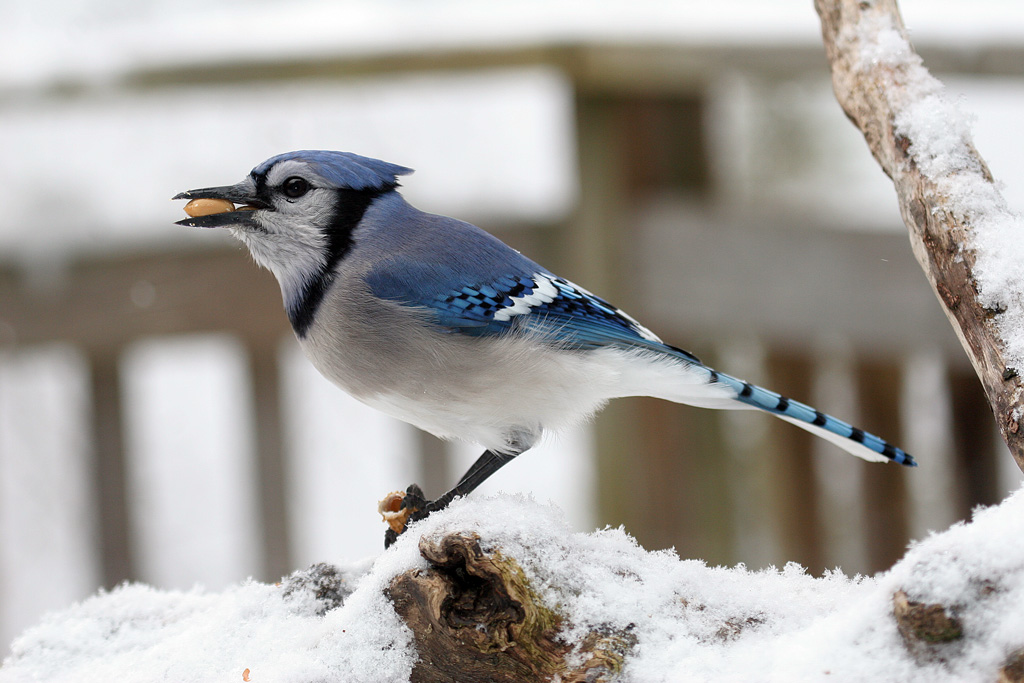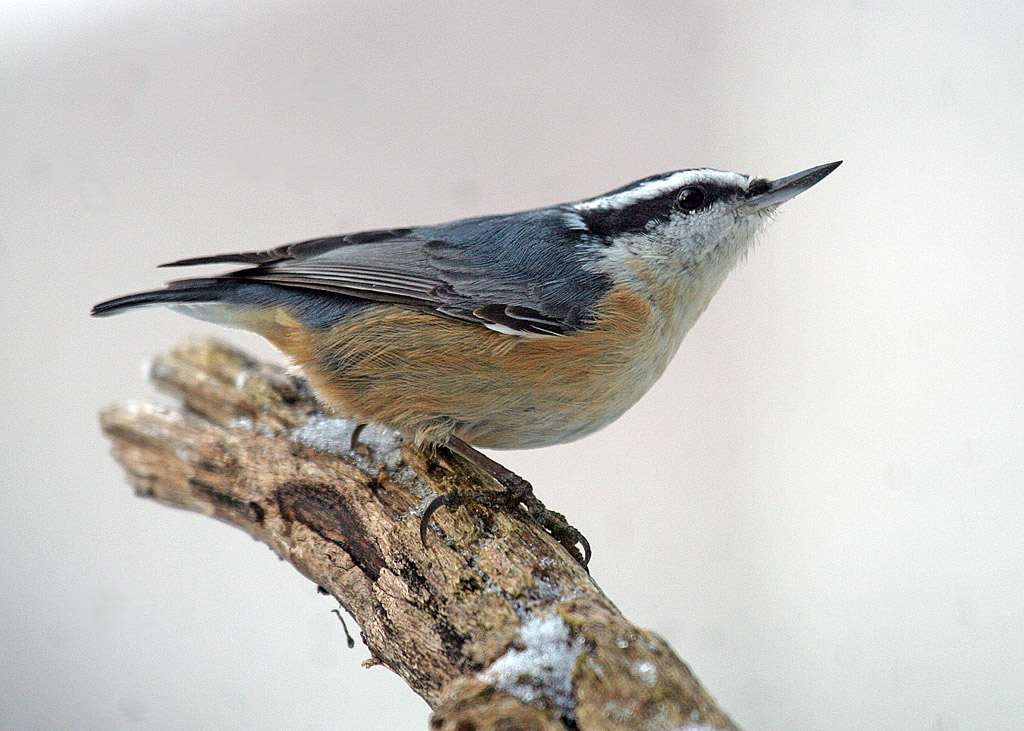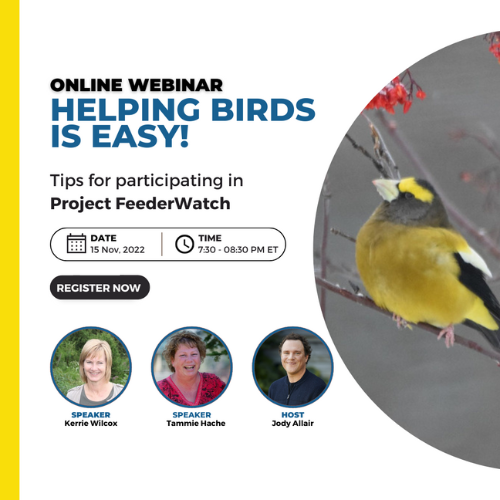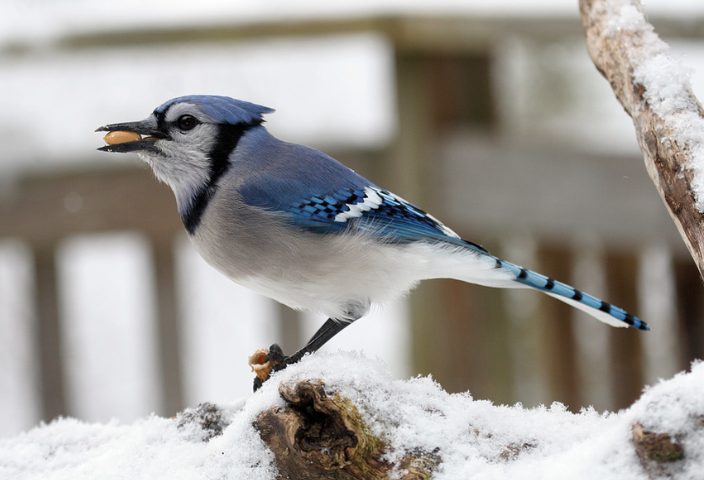By Kerrie Wilcox, Manager, Project FeederWatch, Birds Canada
Helping birds has never been easier. Project FeederWatch, coordinated by Birds Canada and the Cornell Lab of Ornithology, is a welcoming activity for both new-to-birding and experienced birders. You don’t even need a feeder to take part! You’re invited to sign up now and begin counting birds in your neighbourhood when the 36th season of Project FeederWatch starts November 1, 2022.
Last fall and winter, more than 25,000 people across North America watched the birds in their neighbourhoods and turned their observations into scientific discoveries. Black-capped Chickadees topped the list for the most commonly-seen bird across Canada. The Downy Woodpecker and Dark-eyed Junco completed the top three. Thanks so much to all of you who participated!
By taking part in Project FeederWatch, volunteers like you make it possible to track long-term trends in our winter birds. Resources to help you identify the bird species – such as posters, webinars, an app, and online support – are provided. Your observations are used in scientific research, and to increase our understanding of how wildlife is faring and actions needed to protect it.

Blue Jay Photo: Gord Belyea
How to participate
In Canada, you can sign up by making a donation of any amount to Birds Canada at birdscanada.org/feederwatch, or call toll-free: 888-448-2473. Participants in the U.S. can join online at Feederwatch.org.
Everyone is welcome to take part. You decide how much time to spend and how often to count birds – and you don’t even need a feeder to participate! When you sign up, Birds Canada will send you a handbook with instructions, a poster of common species, and a calendar to keep track of your bird watching days.
We need your results to better understand and conserve birds
We still have so much to learn! The long-term dataset collected by Project FeederWatch participants gets more and more useful with each passing season. Your Project FeederWatch data were used in a recent study on Red-breasted Nuthatch movements during winters, which occur when their food is lacking in forests up north. The study suggested that the nuthatches’ need to leave breeding grounds to find food in unfamiliar places resulted in a decline in the breeding population. Project FeederWatch data can help scientists determine the causes of the decline.

Red-breasted Nuthatch Photo: Gord Belyea
Project FeederWatch needs participants across North America to count common birds – the birds that many people see every day – not just rare ones. How are these common species responding to habitat changes and warmer winters? Even if you just see one Black-capped Chickadee or two House Sparrows, it is valuable information that helps build a picture of how the birds we care about are doing from one year to the next.
I hope you’ll join us for the 36th season of Project FeederWatch!
Project FeederWatch is a joint research and education project of Birds Canada and the Cornell Lab of Ornithology. In Canada, Project FeederWatch is supported in Canada by our national sponsor Armstrong Bird Food and by Wild Birds Unlimited.
Get ready for FeederWatch with our free webinar!
November 15 at 7:30 pm Eastern Time
You’re invited to a free webinar to help make FeederWatching easier and more fun! Join our experts as we brush up on bird ID and practice counting birds no matter how large the flock. Plus, we’ll look at ways to feed birds safely, and explore a new tool for viewing FeederWatch results from your area.
This webinar is for everyone – whether you are a new bird watcher, new participant, or have been participating for years, you’ll leave confident and ready to be part in Project FeederWatch! Remember: You don’t need a feeder to participate and you decide how much time to spend. Learn more and register.


